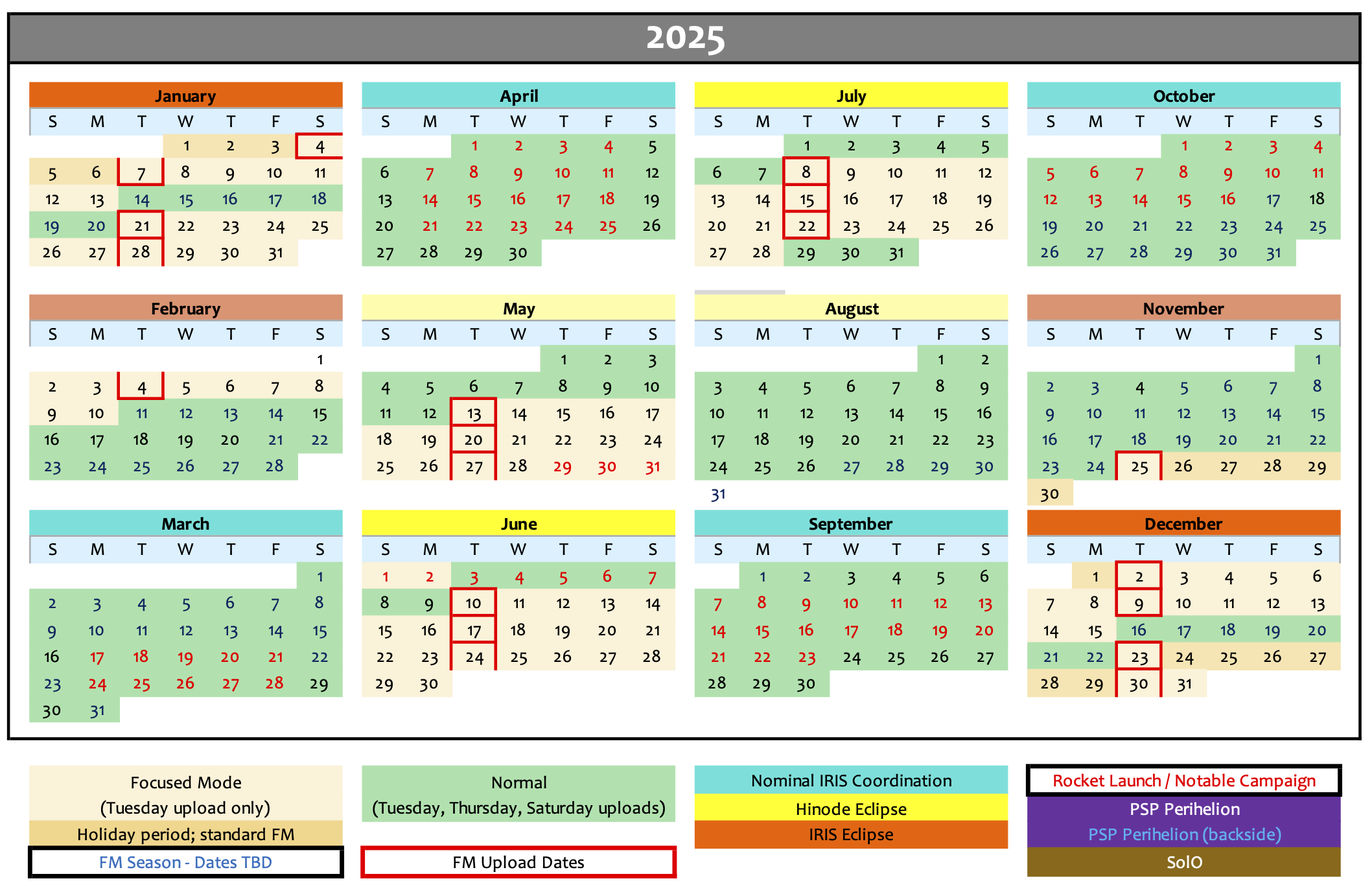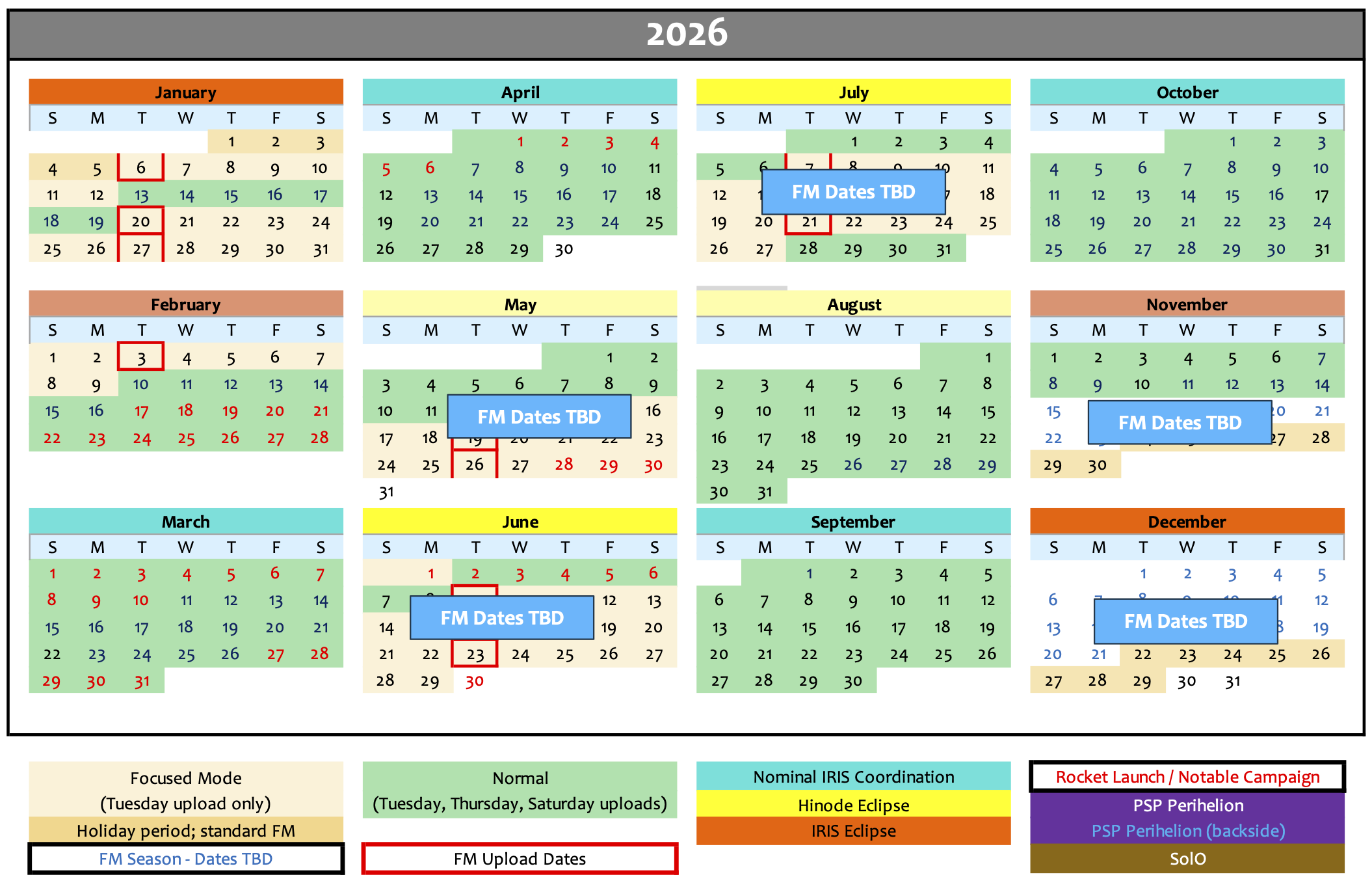National Aeronautics and Space Administration
Marshall Space Flight Center
Technical Status
- Hinode operations are nominal, excepting the loss of the SOT Filtergram camera (explained below under the SOT/FG Anomaly).
- Monthly Events
- Focused Mode Calendar (Subject to Revision)


SOT
- SOT/SP operations are nominal, excepting the loss of the SOT Filtergram camera.
- SOT/FG Anomaly:
- The Hinode Solar Optical Telescope Focal Plane Package contains three CCD cameras: Filtergraph (FG), Spectro-polarimeter (SP) and Correlation Tracker (CT). The FG camera suddenly developed an electrical short circuit on 2016 February 25, after 9.4 years of operation on-orbit, and it was promptly switched off. The other two cameras are unaffected, and science observing resumed with the SP and CT on March 3rd. The FG camera collects both broadband and narrowband images, so neither type has been available since Feb 25th. Engineers at Lockheed Martin have been studying the cause and possible recovery of the FG camera since the anomaly occurred. A similar short circuit in the CCD camera on the GOES-15 Soft X-ray Imager was recovered in 2010, with nominal operation of the instrument since then. Recovery of the FG camera may be attempted in the next month or so, but the likelihood of success is not known. We are proceeding cautiously, since all three cameras share the same power supplies, and we do not want risk damage to the SP or CT.
In the meantime, Hinode and SOT continue a full schedule of observing, including Hinode Observing Programs (HOPs) and frequent coordination with IRIS and other observatories. The telemetry previously used by the FG has been allocated amongst SP and the other two Hinode instruments, resulting in large increases for EIS and XRT, especially when observing targets at the limb. The added telemetry for SP enables collection of more fast time series and full-resolution maps of the photospheric vector magnetic field and other atmospheric properties. Revised observing strategies and programs using only SP are being created to support existing HOPs and new observation requests. Requests for further information or new observations can be sent to us or to the SOT Science Scheduling Coordinators, Dick Shine (shine at lmsal.com) and Takashi Sekii (sekii at solar.mtk.nao.ac.jp).
XRT
-
XRT operations are nominal for most filter combinations.
- Filters no longer in use due to visible light leak
- Ti-poly; C-poly
- Bakeouts
-
Filter Wheel 1 is in full use.
- Cosmetic correction of extra visible light contribution
to the thin filter X-ray images (likely due to pin holes in entrance filter) has been developed.
- Work is in progress to develop more detailed correction and will be made available in the analysis software.
- G-Band Luminosity Monitor Site
EIS
- EIS Anomaly:
- On January 21, 2018, the Hinode/EIS instrument turned off unexpectedly. EIS was turned back on in May without incident and is operating nominally.
- NASA Contact: Adam Kobelski
- Page Last Updated: Thursday, 23 October 2025

